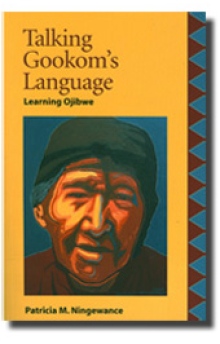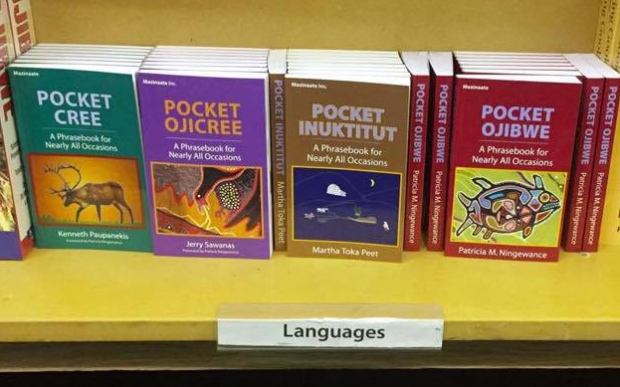 |
Canku Ota
|
 |
|
(Many Paths)
|
||
|
An Online Newsletter
Celebrating Native America
|
||
|
March 2016 - Volume
14 Number 3
|
||
|
|
||
|
Three Tips For Learning
Your Traditional Tongue
|
||
|
by Stephanie Cram -
CBC News
|
||
Reclaiming your traditional tongue is not as hard as you might think, according to Ojibwe language teacher Patricia Ningewance. She encourages everyone to give it a shot, no matter what your age. Ningewance, from Lac Seul First Nation, Ont., said for indigenous people, it is also critical to keep the languages alive. "People my age — I'm in my 60s now — have stopped passing on the language," she said. "We are proud of our language. We speak it to one another, but we haven't passed it on. It gets stuck in your throat and you can't speak to your children." Memories of residential school, where students faced punishment for speaking their own language, continue to scar older generations, making it difficult for them to teach their children. Ningewance has published phrase books in Ojibwe, Swampy Cree, Inuktitut and Oji-Cree. The books will help with the learning process, but here are a few key points to remember when diving into a new language. 1. Keep it fun Ningewance remembers teaching a group of doctors how to speak Ojibwe. "The first thing they wanted to learn was [the names for] body parts and descriptions of body parts," said Ningewance. "They were insulting each other, saying the craziest things, obscene things."
The pocket books were designed to keep learning fun — including an insult section. Ningewance insists the words in the insult section are for reference only, so you can recognize whether people are speaking ill of you. "But of course if you want to say them, use them," said Ningewance. One insult unique to indigenous people is to call someone an egotist. "To tell someone they think highly of themselves is a huge insult," said Ningewance. "That's because in the native world, humility is a virtue." 2. Learning from your elders The best way to learn a language is to seek help from an elder or a friend who is already fluent. Ningewance's grandma was the main inspiration behind her love of language — an inspiration so strong that a painting of her grandmother was included on the cover of her book Talking Gookom's Language.
"She played language games with us like riddles. She had a playful spirit," said Ningewance. "She encouraged us to use our imagination." The tradition of passing her language on continues with her grandson, Aandeg Muldrew. When Ningewance first started to teach her grandson, they met in restaurants to have simple conversations, or drove around while speaking Ojibwe. "I would describe actions around us, what people are doing, what cars are doing, what the weather is like," said Ningewance. "Eventually I began asking him to describe what he saw, using whatever vocabulary he knew." 3. Believe you can do it "Students come to class and they're afraid to learn, because they think it's a huge mountain they have to climb," said Ningewance. "What I try to do with my books is demystify the language and make it easy to learn step by step." A good place to start when learning a language are phrases you will need to strike up a conversation. For example, 'What's your name?' and 'Where are you from?' are two phrases Ningewance usually uses to start a beginner class. Other easy starting points are learning nouns, numbers and colours. In as short as three weeks, Ningewance has seen non-fluent students flourish in Ojibwe. With dedication and hard work, Ningewance believes it is possible to pick up any language.
|
||||||||
|
|
|
|
||
|
|
||
| Canku Ota is a free Newsletter celebrating Native America, its traditions and accomplishments . We do not provide subscriber or visitor names to anyone. Some articles presented in Canku Ota may contain copyright material. We have received appropriate permissions for republishing any articles. Material appearing here is distributed without profit or monetary gain to those who have expressed an interest. This is in accordance with Title 17 U.S.C. Section 107. | ||
|
Canku Ota is a copyright ©
2000 - 2016 of Vicki Williams Barry and Paul Barry.
|
||
 |
 |
|
|
The "Canku
Ota - A Newsletter Celebrating Native America" web site and
its design is the
|
||
|
Copyright ©
1999 - 2016 of Paul C. Barry.
|
||
|
All Rights Reserved.
|
||

